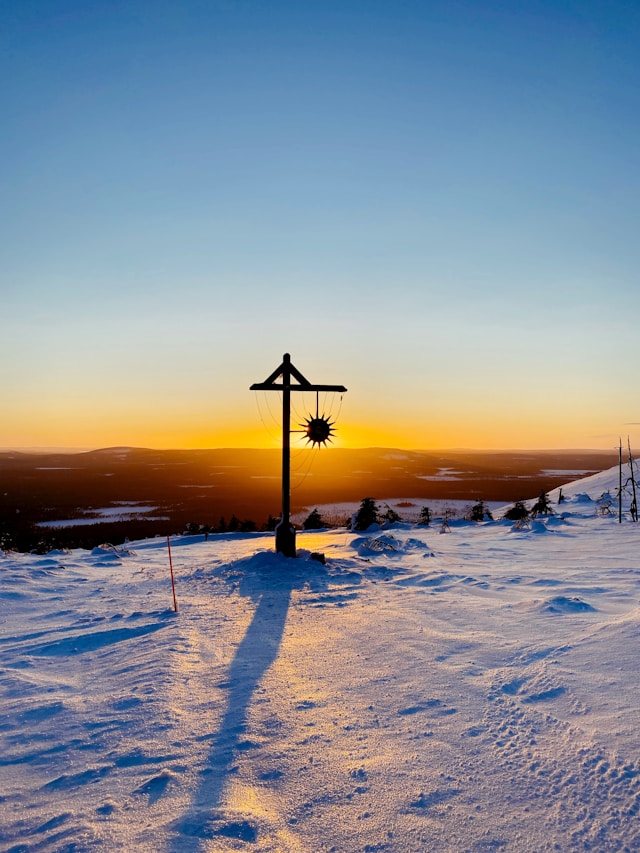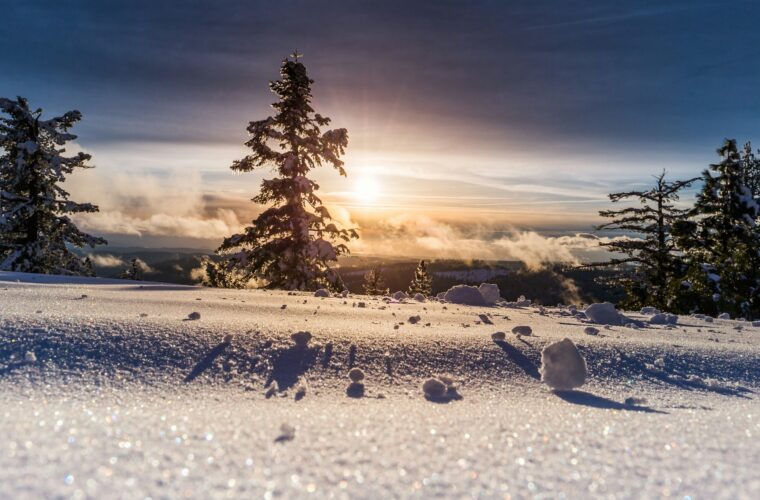Winter solstice, also known as Yule, is a time of year that holds great symbolic significance. For thousands of years, people around the world have celebrated the winter solstice as a time of renewal, reflection, and hope. The winter solstice marks the longest night of the year and the beginning of the return of the sun, making it a time of great spiritual significance. Winter solstice symbols are therefore of great importance to different cultures.
Throughout history, many different cultures have developed their own unique symbols and traditions to mark the winter solstice. From the Yule log to mistletoe, these symbols have come to represent the hope and renewal that comes with the return of the sun. In many cultures, the winter solstice is seen as a time of rebirth and new beginnings, making it a perfect time to set intentions and make resolutions for the coming year.
Whether you celebrate the winter solstice as a religious holiday or simply as a time to connect with nature and reflect on the passing year, understanding the symbols and traditions associated with this ancient celebration can deepen your appreciation for the changing seasons and the cycles of life. In the following sections, we will explore some of the most common winter solstice symbols and what they represent.

Historical Significance of Winter Solstice Symbols
The winter solstice has been celebrated for thousands of years by cultures all around the world. The symbols associated with this astronomical event have deep historical significance and represent a variety of beliefs and traditions. In this section, we will explore the historical significance of winter solstice symbols.
Ancient Cultures and Celebrations
Winter solstice celebrations date back to ancient times, and many cultures have developed their own unique symbols and rituals to mark the occasion. For example, the ancient Romans celebrated Saturnalia, a festival honoring the god Saturn, during the winter solstice. This festival was marked by feasting, gift-giving, and the lighting of candles.
In Norse mythology, the winter solstice marked the festival of Yule, which celebrated the rebirth of the sun. This festival was marked by the lighting of fires and the exchange of gifts.
Astronomical Context
The winter solstice marks the point in the year when the Northern Hemisphere is tilted furthest away from the sun. This results in the shortest day and longest night of the year. As such, many winter solstice symbols are associated with the return of the sun and the promise of longer days to come.
One of the most common winter solstice symbols is the evergreen tree, which represents the promise of new life and growth. Other symbols associated with the winter solstice include holly, mistletoe, and the yule log.
Overall, the symbols associated with the winter solstice have deep historical significance and represent a variety of beliefs and traditions. From ancient cultures to modern-day celebrations, these symbols continue to play an important role in marking the changing of the seasons and the return of the sun.
Common Winter Solstice Symbols
As the winter solstice approaches, people around the world celebrate the longest night of the year with symbols that represent hope, renewal, and the return of light. Here are some of the most common symbols associated with the winter solstice:
Evergreen Plants
Evergreens like holly, ivy, and mistletoe have been used as symbols of life and rebirth for centuries. Their ability to stay green throughout the winter months has made them a powerful symbol of resilience, endurance, and hope. Many people decorate their homes with evergreens during the winter solstice to bring a sense of warmth and vitality to their surroundings.
Yule Log
The Yule log is a traditional symbol of the winter solstice that dates back to pagan times. It is usually made from a large piece of wood that is burned in the fireplace on the night of the solstice. The Yule log represents the return of the sun and the promise of longer days ahead. In some cultures, the ashes from the Yule log are believed to have healing properties.
Candles and Lights
Candles and lights are a common symbol of the winter solstice, representing the return of light and warmth. Many people light candles or hang strings of lights during the solstice to celebrate the rebirth of the sun. In some cultures, the lighting of candles is also believed to bring good luck and ward off evil spirits.
These are just a few of the many symbols associated with the winter solstice. Whether you celebrate with evergreens, Yule logs, candles, or other symbols, the solstice is a time to reflect on the past year and look forward to the new one with hope and optimism.
Modern Interpretations and Celebrations
The Winter Solstice has been celebrated for centuries, and modern interpretations have added new layers of meaning to this ancient tradition. Here are some of the ways people celebrate the solstice today.
Festivals and Events
Many festivals and events are held around the world to celebrate the Winter Solstice. In the United States, the Burning Man festival is held annually in the Nevada desert around the time of the solstice. This festival celebrates the rebirth of the sun and the power of community.
Another popular event is the Winter Solstice Lantern Festival, held in Vancouver, Canada. This festival features a parade of lanterns and other illuminated objects, symbolizing the return of light and warmth.
Symbolic Foods
Food is an important part of many Winter Solstice celebrations. In China, for example, it is traditional to eat dumplings during the solstice. The dumplings are shaped like the sun, symbolizing the return of light.
In Scandinavia, a traditional solstice dish is lutefisk, a type of dried fish that is soaked in lye and then boiled. This dish is said to represent the harshness of winter and the need to preserve food for the long, dark months ahead.
Decorations and Crafts
Many people decorate their homes with symbols of the Winter Solstice. One popular decoration is the Yule log, a large log that is burned in the fireplace to symbolize the return of light and warmth.
Another popular craft is the creation of sun catchers, which are made by cutting out shapes from colored paper and hanging them in windows to catch the light. These sun catchers are a reminder of the power of the sun and the importance of light in our lives.
Overall, the Winter Solstice is a time to celebrate the return of light and warmth, and to reflect on the cycles of nature and the passage of time. Whether you celebrate with festivals, food, or decorations, this ancient tradition has something to offer everyone.




